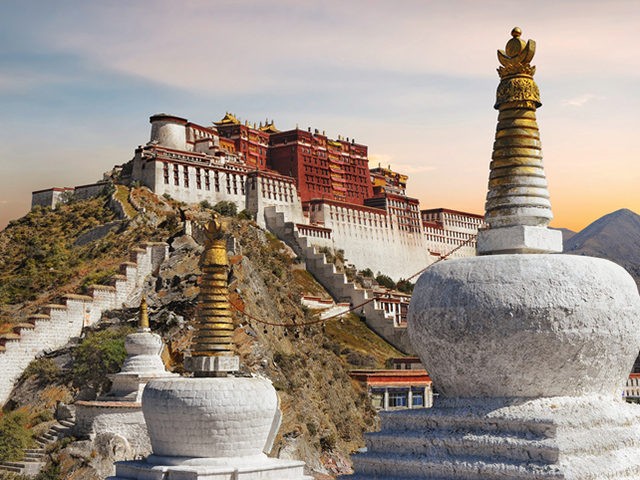Chinese foreign minister Wang Yi made a “rare” visit to Tibet on Friday amid China’s ongoing border dispute with India along their shared Himalayan boundary.
On June 15, Chinese and Indian border troops clashed in the western Himalayas’ disputed Galwan Valley, resulting in the deadliest border conflict between the two countries in at least 45 years. The hand-to-hand combat killed 20 Indian soldiers. Beijing never officially confirmed its number of casualties, but Indian military sources estimate that about 40 Chinese troops died in the skirmish.
Wang is the first senior Chinese Communist Party (CCP) official to visit Tibet’s frontier area, much of which borders India, since the military conflict. The visit included “a trip to the disputed border with India,” according to the South China Morning Post (SCMP). Wang last visited Tibet five years ago, according to the newspaper, which described his visit as “rare.”
China’s foreign ministry issued a “terse” statement addressing Wang’s Tibetan visit on Saturday, according to the report. Despite Wang also serving as China’s special representative in border talks with India, the statement failed to mention China’s South Asian neighbor.
“[T]he security and stability of Tibet is of pivotal importance to China’s overall development,” Wang said in the statement. He further “urged diplomats to work with local officials to protect national security in the face of unprecedented challenges in the post-coronavirus world,” according to the report.
Without naming India, Wang stressed that the CCP’s occupation of Tibet in recent years has been essential to China’s “stabilizing border areas,” according to state-controlled China Global Television Network (CGTN).
The CCP has faced international criticism for its occupation of Tibet and inhumane treatment of Tibetans. Last month, U.S. Secretary of State Mike Pompeo imposed visa restrictions on CCP officials in response to the Communist Party’s obstruction of U.S. diplomats and others traveling to Tibet, which he said impeded crucial human rights monitoring in the Chinese-occupied territory.
The June 15 Galwan Valley clash was the product of a greater, ongoing border dispute between India and China that remains unresolved despite both side’s official statements in recent weeks claiming they have “disengaged” from the standoff.
Wang’s trip to Tibet on Friday came one day before Indian Prime Minister Narendra Modi “promised to build a 1.4 million-strong military to defend the country’s sovereignty in a speech at an independence day ceremony” on Saturday according to the SCMP. A report in late July indicates that India plans to deploy 35,000 additional troops to its China border.
China, for its part, has steadily built up its forces and infrastructure along its border with India, especially in Tibet, amid the conflict. Late last month, the Chinese People’s Liberation Army (PLA) conducted live-fire drills in the “middle section of the Himalayas” in the army’s latest show of strength along the border.

COMMENTS
Please let us know if you're having issues with commenting.